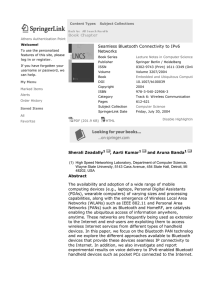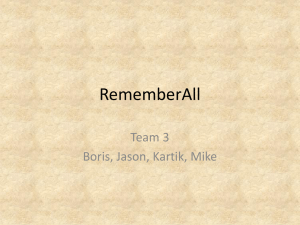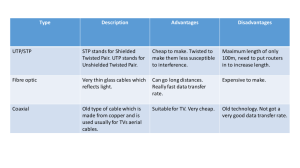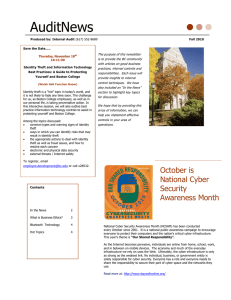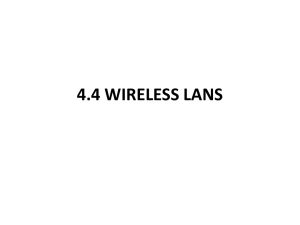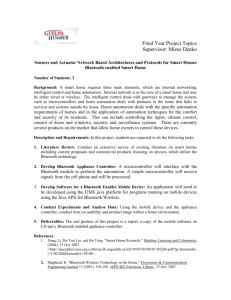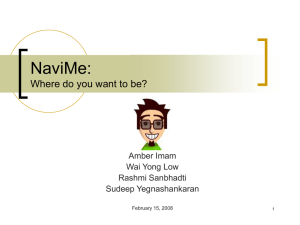ELEC 3060 – WIRELESS DESIGN LAB
advertisement
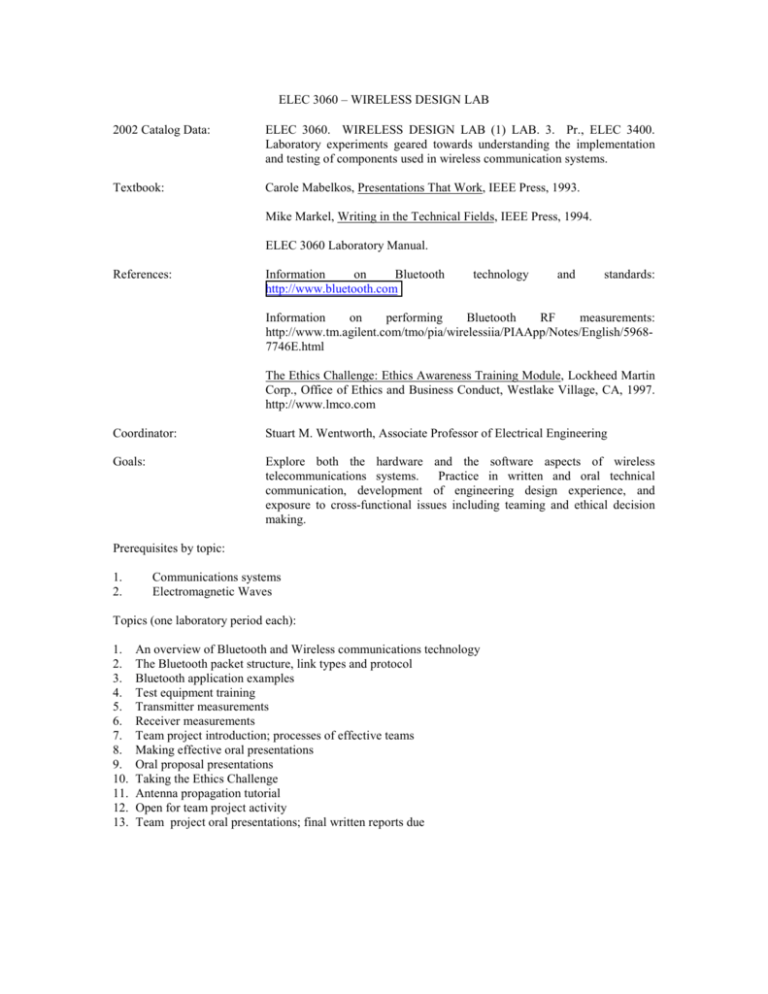
ELEC 3060 – WIRELESS DESIGN LAB 2002 Catalog Data: ELEC 3060. WIRELESS DESIGN LAB (1) LAB. 3. Pr., ELEC 3400. Laboratory experiments geared towards understanding the implementation and testing of components used in wireless communication systems. Textbook: Carole Mabelkos, Presentations That Work, IEEE Press, 1993. Mike Markel, Writing in the Technical Fields, IEEE Press, 1994. ELEC 3060 Laboratory Manual. References: Information on Bluetooth http://www.bluetooth.com technology and standards: Information on performing Bluetooth RF measurements: http://www.tm.agilent.com/tmo/pia/wirelessiia/PIAApp/Notes/English/59687746E.html The Ethics Challenge: Ethics Awareness Training Module, Lockheed Martin Corp., Office of Ethics and Business Conduct, Westlake Village, CA, 1997. http://www.lmco.com Coordinator: Stuart M. Wentworth, Associate Professor of Electrical Engineering Goals: Explore both the hardware and the software aspects of wireless telecommunications systems. Practice in written and oral technical communication, development of engineering design experience, and exposure to cross-functional issues including teaming and ethical decision making. Prerequisites by topic: 1. 2. Communications systems Electromagnetic Waves Topics (one laboratory period each): 1. 2. 3. 4. 5. 6. 7. 8. 9. 10. 11. 12. 13. An overview of Bluetooth and Wireless communications technology The Bluetooth packet structure, link types and protocol Bluetooth application examples Test equipment training Transmitter measurements Receiver measurements Team project introduction; processes of effective teams Making effective oral presentations Oral proposal presentations Taking the Ethics Challenge Antenna propagation tutorial Open for team project activity Team project oral presentations; final written reports due Typical method for evaluating student performance: Laboratory practice Engineering notebook Written reports Oral communications 25% 20% 35% 20% Typical grading scale: A: 90-100% B: 80-89% C: 70-79% D: 60-69% F: 0-59% Computer usage: • • Students use computer hardware interfaced with computers and software to test the interface Students use computer tools to author reports and presentations. Laboratory projects (including major items of equipment and instrumentation used): • Equipment and instrumentation - The Ericsson Bluetooth Development Kit, personal computer for hardware interfacing and software implementation, signal generators, signal analyzers, spectrum analyzers • Lab Projects – see “Topics” above. Class attendance: Class attendance and its effect on course grade is the prerogative of the individual instructor and will be part of the course outline and announced the first day of class. Policy on unannounced quizzes: Unannounced quizzes and their effect on course grade are the prerogative of the individual instructor and will be part of the course outline and announced the first day of class. ABET category content as estimated by faculty member who prepared this course description: Engineering science: Engineering design: 0.2 credit or 20 % 0.8 credit or 80 % Students who need special accommodations should make an appointment to discuss their needs as soon as possible. Prepared by: Stuart M. Wentworth Date: May 17, 2001
